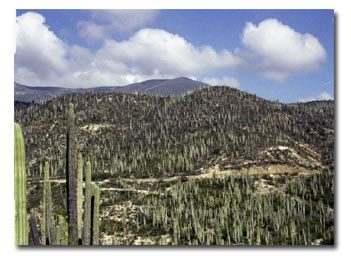Analysis of Floristic Diversity from a Phylogenetic Perspective |
 |
I plan to initiate a research program aimed towards the analysis of floristic diversity from the standpoint of a phylogenetic framework. I would like to investigate if there are significant biases in the phylogenetic composition of the angiosperm flora of naturally delimited geographical or ecological units, which may be detected, for example, from a higher than expected representation of particular angiosperm clades. |
If a particular flora contains a significant imbalance in the proportion of taxa that are close to the root of angiosperms versus taxa that evolved after many events of phylogenetic branching, this flora may be recognized to act preferentially as preserving or as generating species diversity, respectively. These questions may be addressed at a world-wide scale by identifying geographical areas or ecological units in which particular angiosperm clades are preferentially represented, or significantly dominated by early- versus late-diverging taxa.
The use of a phylogenetic approach to investigate biodiversity is in its infancy at a worldwide level. One of my students is currently evaluating the angiosperm composition of the Evergreen Tropical Rain Forest in Mexico considering a phylogenetic perspective. Through collaborative research, I would like to develop analytical tools based on currently available methods, and to build on my abilities, including paleobotany, knowledge about the plant phylogenetic framework, and relaxed molecular clock methods, to investigate floristic diversity from a phylogenetic standpoint.